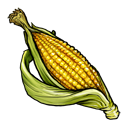This article provides information about the health benefits of a variety of foods, in several categories: vegetables and fruit; nuts and seeds; food made with or consisting of grains, such as pasta, rice and bread; the dairy products cheese and milk; oily fish; and confectionery. People are advised to eat some foods from each of those categories for a healthy diet, except confectionery, naturally, since eating that may give a nice feel-good sensation, but most of it's calories without significant nutritional value. (So it's naturally best to eat it as a treat now and again, rather than to have it as a significant part of the diet.)
Some healthy foods that seem boring might appear much more enticing when their health benefits are known.
At the end of the article, there's a section on ways of making healthy food more appealing to children.
Carrots
Carrots are high in beta carotene, which the body converts to vitamin A. It can help prevent some cancers and protect against damage by free radicals. Vitamin A prevents a form of night blindness and can increase good night vision. Just one carrot a day can be enough. It's possible that a combination of beta carotene and vitamin C can also help prevent cataracts. Both of those things are also found in cantaloupe melon.
- Free radicals are damaged cells that harm other cells. When too many are flowing around the system, the body has a hard time defending against them, and eventually, they can contribute to cancers forming and other diseases that occur more often as the body ages and gets more damaged, such as heart disease and dementia. But there are Some vitamins and minerals that are sometimes known as antioxidants and free radical scavengers that counteract the effects of free radicals.
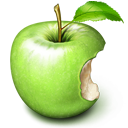 The reason free radicals come into being is that cells go through a process called oxidation, which is where oxygen molecules flow around the system helping the body give cells energy, but then gradually it causes them to burn out and die, which is OK because the body generates fresh new cells instead; it's part of a repair mechanism that's useful because it means that cells that have suffered a bit of wear and tear are got rid of and replaced. But the process of doing that isn't perfectly efficient, and a small percentage of cells are left damaged; they're missing a molecule and it's as if they go on the hunt for one to make up for it, so they can steal one from a healthy cell, turning each one into damaged cells that also go on the hunt for new molecules and steal them from other cells, which then do the same with other cells; it becomes a damaging chain reaction that can cause problems over time. Those damaged cells are called free radicals. The body does have some defences against them, but sometimes there can get to be too many for it to cope well. Antioxidants can stop the damaging chain reaction because they're like donors; the damaged cells take the molecules they need from them instead of from other cells.
The reason free radicals come into being is that cells go through a process called oxidation, which is where oxygen molecules flow around the system helping the body give cells energy, but then gradually it causes them to burn out and die, which is OK because the body generates fresh new cells instead; it's part of a repair mechanism that's useful because it means that cells that have suffered a bit of wear and tear are got rid of and replaced. But the process of doing that isn't perfectly efficient, and a small percentage of cells are left damaged; they're missing a molecule and it's as if they go on the hunt for one to make up for it, so they can steal one from a healthy cell, turning each one into damaged cells that also go on the hunt for new molecules and steal them from other cells, which then do the same with other cells; it becomes a damaging chain reaction that can cause problems over time. Those damaged cells are called free radicals. The body does have some defences against them, but sometimes there can get to be too many for it to cope well. Antioxidants can stop the damaging chain reaction because they're like donors; the damaged cells take the molecules they need from them instead of from other cells.
Free radicals can contribute over time to problems as serious as heart disease, dementia, cancer and other problems of ageing. Antioxidants can reduce the risks because they mend the damaged cells and stop them damaging others. So foods with antioxidants in them are very good to eat. It's best to eat a variety of them, not just the ones with the most antioxidants in, because different antioxidants work best with different kinds of cells. So eating a variety of fruits and vegetables and other healthy foods is best.
The corrosive effect of oxygen can be seen in food that hasn't been eaten yet; an apple peeled and then left will soon go brown; that's the biological equivalent of rust, caused by oxygen. The effects of antioxidants can be seen as well; if the apple's peeled and cut and then put in a glass of lemon juice rather than just left, it won't go brown, because the amount of vitamin C in the lemon will act as an antioxidant and protect it. That's what it does in the body as well.
 It's especially good to eat foods containing antioxidants because a variety of things cause a bit of wear and tear on cells and make them more vulnerable to being turned into free radicals. Pollution, smoking, sunlight, the ageing process, and exercise can do that. When people exercise, they need to use more energy, and they take in more oxygen which helps cells generate more. But then the oxygen puts them through the wearing down process, so a small percentage get turned into free radicals. So exercise actually increases the amount of free radicals the body produces. That doesn't mean exercise isn't healthy after all; it is; in fact it's essential to health. But if exercising, or if being exposed to things like pollution or smoking that also make cells vulnerable to wear and tear, it's even more important to eat good amounts of antioxidants to stop the free radicals doing damage.
It's especially good to eat foods containing antioxidants because a variety of things cause a bit of wear and tear on cells and make them more vulnerable to being turned into free radicals. Pollution, smoking, sunlight, the ageing process, and exercise can do that. When people exercise, they need to use more energy, and they take in more oxygen which helps cells generate more. But then the oxygen puts them through the wearing down process, so a small percentage get turned into free radicals. So exercise actually increases the amount of free radicals the body produces. That doesn't mean exercise isn't healthy after all; it is; in fact it's essential to health. But if exercising, or if being exposed to things like pollution or smoking that also make cells vulnerable to wear and tear, it's even more important to eat good amounts of antioxidants to stop the free radicals doing damage.
The body actually increases its own defences against free radicals as a person's exercise increases. But it does it gradually, just as the muscles build up gradually. So it would find it more difficult to cope if exercise isn't done that often but it's done intensively when it happens, just as people are more at risk of straining a muscle if they work it a lot suddenly after not having done so for a while. So exercise is healthiest when it's done often and regularly with similar amounts being done each time. And if it is increased, eating an increased amount of nuts and seeds as well as fruits and vegetables can help the body's defences.
Studies have found supplements of antioxidants to be ineffective. Perhaps antioxidants work best in combination with other substances in fruits and vegetables. So getting antioxidants from foods is best.
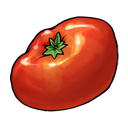
There are several chemicals found in vegetables that are thought to stimulate enzymes in the liver to stop some potentially carcinogenic chemicals causing harm, or help flush them from the body, so reducing the risk of cancer. Carrots, as well as green peppers and tomatoes, contain a substance called coumaric acid and similar substances, which seem to help prevent chemicals called nitrosamines forming in the gut which can be carcinogenic. Nitrosamines can form after certain other foods are eaten, such as some kinds of meat. Processed tomato products such as tomato soup and ketchup also contain the chemicals that help stop them.
While it's much better to eat most vegetables raw, it can be better to eat carrots lightly cooked, since they've got tough cell walls that prevent the body absorbing a lot of the beta carotene from them when they're raw, but the cell membranes are broken down when they're cooked, so the body absorbs more, especially if a food containing some fat's eaten with the meal, since the vitamin dissolves in fat. It's best not to cook them for that long though, since vitamin C is lost because it dissolves in the water the carrots are being cooked in.
It's best to peel carrots and cut the tops and bottoms off, because the peel can contain dangerous levels of pesticides. Nearly all's eliminated by peeling them and topping and tailing them.
Onions

Onions could help lower cholesterol levels and reduce the risk of heart disease. They're most effective for that if they're raw, and carefully peeled, since many of the nutrients are in the very outer layers. Cooking them for any longer than a few minutes begins to destroy nutrients. Cooking them does take the heat out of them though, so cooking them for a little while can make them more bearable to eat.
It's also been claimed that onions contain a substance that protects against the harmful effects of fatty foods on the blood.
Onions can help prevent bacterial infection. Freshly-cut raw onion has been found to be especially useful in helping to fight bacteria involved in infections of the teeth and gums.
It's thought onions can help reduce the risk of blood clotting, which can be useful if someone's in danger of getting something like deep vein thrombosis, strokes, heart disease or another illness where the risks of blood clotting in parts of the body where it could do harm are increased by problems with the circulation.
Onions might also reduce the risk of cancer. It's thought the sulphurous compounds in them help prevent the formation of tumour cells.
Onions could be incorporated into the diet in various ways, including being mixed with rice and other chopped vegetables, perhaps with something for a bit of added flavouring.
Unfortunately, onions can trigger off migraines in people whose bodies have an intolerance of certain substances.
Garlic
Garlic has anti-viral and anti-bacterial properties. If eaten every day, it's also good for the heart; it can help lower blood pressure and cholesterol. The daily recommended dose of garlic is a couple of cloves, which is about four grams. In Germany, garlic has even been used to make a drug that lowers cholesterol.
Naturally, people shouldn't entirely rely on foods to prevent or combat health problems. If anyone has anything serious wrong with them, medical advice should always be sought. But food can play a part in a return to health.
It's best not to cook garlic much, since cooking might destroy some of its goodness. Again though, cooking it a bit does take the heat out of it, so it's easier to eat.
For anyone with a cold who can tolerate eating garlic raw, it can be a nasal decongestant.
There are people who have to be careful though, because it can trigger off migraines or allergies in susceptible people, and handling it a lot can irritate the skin and cause contact dermatitis in some people. For most people it doesn't cause a problem though.
Lettuce
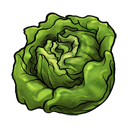
Lettuce and salad leaves contain quite a lot of nutrients including vitamin C, folate, beta carotene, calcium and iron.
- Virtually all calcium is used to keep the bones and teeth strong. The rest is used by the body to help clot blood, which is important if someone cuts themselves, because if the blood in the wound can harden, it can help stop more blood coming out. Calcium also helps the body keep the nerves and muscles healthy.
Most calcium's found in milk and cheese, but some is found in some other foods such as dark green leafy vegetables like some cabbage.
The body's usually good at regulating the amount of calcium in it so people won't normally get too much through their diet, since when there's more than the body needs, it just excretes it. If the body doesn't have enough calcium, it'll take it from the bones when it needs it for other bodily functions. Obviously that isn't ideal. The body can only get too much calcium through disease or through over-use of supplements like vitamin D, which helps the body to absorb it.
Since vitamin D helps the body absorb calcium, it's normally good if they're taken together in the diet.
A pregnant woman will need more calcium than most, but will still get enough from a good balanced diet. But there are certain foods and drinks it's best not to have much of, because they either stop the body absorbing so much calcium or cause it to excrete more than it should. Those foods and drinks include tea and coffee, which are allright in moderation but people shouldn't have lots, and rhubarb and spinach, salt and wheat bran, which people could try reducing.
The folate content in lettuce is especially good for women in the first stages of pregnancy, because folate prevents birth defects in the child like spina bifida. Iceberg lettuce has an especially high level of folate.
The amount of nutrients in lettuce varies though, according to which variety of lettuce it is, how fresh it is, the time of year it's grown, and whether it's the outer or inner leaves being eaten; the darker outer ones contain more beta carotene.
Lettuce and salad leaves are very low in calories, since they're over 90 % water.
Lettuce and salad leaves can be great for a weight loss diet, except if they're coated in salad dressings which are often fatty, like mayonnaise. It can be nice to eat them without dressing in any case, because some have a nice flavour. Lettuce has different flavours depending on the species. It could be worth trying out different ones.
One problem with lettuce is that some can be high in nitrates, which mix with a chemical in the stomach to form chemicals called nitrosamines which can increase the risk of cancer. But eating vitamin C in the same meal is believed to counteract the effects. Still, it's probably wisest to eat lettuce in moderation, though there are laws about how lettuce can only be sold if the amount of nitrates in it are below certain recommended safety levels.
Celery

Celery might help to lower cholesterol levels and blood pressure. It's been claimed it can also help to relieve joint pain caused by arthritis and gout, because it has anti-inflammatory properties, though how much one would have to eat to get a pain-relieving effect from it is uncertain. It's low in calories and rich in potassium, which helps maintain a healthy level of blood pressure, as long as salt isn't added to the celery. There's also another substance in celery that scientists believe lowers blood pressure, as well as being a mild sedative.
Celery also helps the kidneys function efficiently so as to get rid of bodily waste in a timely manner.
Unfortunately, it's best to only eat it in moderation, since some can contain nitrates, which interact with other things in the gut to become carcinogenic, though some scientists think there are other things in celery that counteract the effects.
Not all celery will have the same amount of nitrates; the amount picked up by vegetables varies according to several things such as the kind of plant, the type of soil it was grown in, the kind of fertilisers used and the light intensity. Estimates of the amount people eat have been done and it's thought the amount is generally within safe limits. But still, it's best not to eat celery, spinach and lettuce in large amounts over a long period of time, but only in moderation. Steaming or lightly boiling such things does reduce the amount of nitrates in them though.
Oranges

Oranges are an excellent source of vitamin C. Just one medium-sized fruit contains more than the adult daily requirement. Vitamin C helps to make collagen, which is very important in keeping the skin healthy. It also helps fight infection, and is an antioxidant, so it helps fight harmful free radicals in the body that increase the risk of cancer if left to flow around the body unchecked.
Oranges also contain the B vitamins folate and thiamin.
Oranges also contain pectin, which may help to lower cholesterol levels if eaten in fairly large amounts. It's in the membranes between the segments, so it's better to eat the whole fruit rather than just drinking the juice, though that's still very nutritious. Pectin's a kind of soluble fibre that helps with digestion and is found in most fruits, especially apples, lemons and redcurrants.
The membranes between segments also contain bioflavonoids which are antioxidants, so they help fight harmful free radicals, just as vitamin C does.
It's best not to eat orange peel, or at least to wash it thoroughly if using it for marmalade or something, because that tends to be sprayed with fungicides to prevent damage. If any fruit at all has mouldy patches or spots on it, it's best not to eat it, because it could contain carcinogens. It's best to be especially aware of that problem if buying organic fruit, since it isn't protected from mould infestation by pesticides.
Other fruits besides oranges do contain pesticides, to keep them free from damage by pests and diseases, but they don't contain much; the health benefits of eating them far outweigh the risks. Recommended safe levels of pesticides are set by laws, so suppliers have to keep within them.
Oranges do unfortunately cause migraines in people who are susceptible to them, and some people are also allergic to citrus fruit and break out in a rash after eating them. For most people, they're a good health food though.
Nuts
Nuts are a great source of vitamin E. And they're a useful source of the B vitamins thiamin and niacin. They also contain some nourishing minerals, including zinc, and help to make up protein.
- Zinc can be found in all the body tissues and is essential for a lot of enzymes to work.
- Enzymes are types of proteins that are involved in all the work each cell does. They make it possible for chemical reactions to be done extremely quickly. Some make digestion possible by breaking down food into separate molecules so different nutrients in it can be used. For instance, some will break glucose down to make energy. There are a lot of different kinds of enzymes to help cells in all the various functions they need to do to work properly, such as building cell walls, dividing and so on. Some of the enzymes zinc is essential for help combat free radicals.
Zinc is essential to allow the body to keep its DNA in good working order, and to reproduce it and interpret the information in it so it knows what to do. So it's crucial that a developing body has zinc so it can actually grow.
Zinc is especially important for the development of both the male and female reproductive organs. Children deprived of zinc while growing up won't be as good at reproducing later.
Zinc is also vital for the immune system to work well. In fact, it's so important to it that even a mild zinc deficiency can make people more vulnerable to infection. So it's especially important for people whose immune systems don't function at their best to have enough, such as the elderly.
Zinc is needed for people to have a healthy appetite, and helps the taste buds to have a good sense of taste and the body to have a good sense of smell. It's also one of the things that aids the body in having good night vision, and it helps the body process alcohol.
Zinc is most easily absorbed from animal products, a wide variety of which contain it, milk and cheese as well as meat and fish. It's also found in grains, but it isn't so easily absorbed from those, both because it tends to be in the outer layers that often get discarded during the milling process, and because grains tend to contain substances called phytates that inhibit the body's absorption of various minerals. Zinc is also found in sesame and pumpkin seeds, spinach, green peas, chickpeas, baked beans and yoghurt.
Nuts are also one of the best sources of vitamin E, but both Vitamin E and thiamin are destroyed if nuts are roasted.
Walnuts could help reduce the risk of heart disease. If they're eaten as a replacement for biscuits, cakes and other things containing saturated fat, it's believed they can help lower cholesterol.
Walnuts, peanuts and hazelnuts are an especially good source of essential fatty acids that are vital for normal tissue growth and development.
Nuts are especially useful for vegetarians, because they can supply a lot of the nutrients most people get from animal products: most of the B vitamins, phosphorus, iron, copper, potassium and protein. The protein isn't as good as animal protein though, because it only contains some of the amino acids that make it up. But combining it with other foods that contain the other ones makes for something as good as the protein from meat. Eating nuts in a diet that also contains bread, grains and pulses, especially soya beans and lentils, means the body will have all the amino acids it needs to make its own protein.
- Phosphorus has an essential role in the formation and maintenance of healthy bones and teeth. It's also vital for the releasing of energy from cells, and for transporting a lot of nutrients around the body and helping the body absorb them. It also regulates the activity of proteins. It's widely available in food, since it's in all foods that contain protein or some of the building blocks of protein.
Unfortunately, nuts are high in calories, healthy though they are. Except for chestnuts, they do contain a lot of fat, though it is the most healthy kind, not saturated fat.
Unfortunately, nuts, especially peanuts, can sometimes get moulds on them that increase the risk of cancer if eaten. It's best not to eat peanuts sold as bird food, because they aren't as strictly quality-controlled as nuts meant for human consumption. Nuts also shouldn't be given to little children unless they're finely ground, because they can be a choking hazard, since some little children don't chew their food well before swallowing it. And some people have severe allergies to peanuts.
It's best to store nuts somewhere cool and dry to minimise the risk of harmful moulds growing on them.
Seeds

Seeds contain zinc, especially pumpkin seeds. Pumpkin seeds are also an extremely good source of iron and phosphorous, and contain a lot of potassium, magnesium, and especially useful amounts of zinc.
Most seeds contain good amounts of all the B vitamins except vitamin B12. They're also a good source of vitamin E.
Seeds contain a good amount of some of the amino acids that make up protein.
Seeds are a good source of fibre, so they can help keep the bowels regular, which means harmful substances derived from old food don't build up in them for too long.
Sunflower seeds are a good source of linoleneic acid, which helps to maintain cell membranes in good working order.
Unfortunately, seeds are high in calories. They have a high fat content. Still, the fat in them is unsaturated, so it's healthier than saturated fat.
Raw seeds tend to contain toxins as part of the survival mechanism of the plants they come from; they're there to stop animals eating them. Seeds should be cooked to kill the toxins, which can otherwise make protein hard to digest and may cause vomiting and diarrhoea. Most seeds that are sold for eating are cooked already.
Salted seeds aren't as healthy, because too much salt can contribute to high blood pressure.
Lentils
Lentils come in different colours. Green and brown ones contain a good amount of selenium, and useful amounts of iron and manganese, and also contain vitamin B6, thiamin, folate, zinc and phosphorous.
- Vitamin B6 does several important things, including helping the body use and store the energy it gets from protein and carbohydrates, helping the body keep the immune and nervous systems in good working order, and helping the body make haemoglobin, which is part of the blood, and transports oxygen around the body.
- Tiny amounts of oxygen are picked up by cells in the body, and it helps turn the calories from food into energy. Oxygen is also part of protein and other things the body needs, so it's essential for the proper functioning of the body, beyond allowing people to breathe.
Vitamin B6 is also found in brown rice, wholemeal bread, nuts, peanuts, some vegetables, and a variety of animal products.
- Vitamin B6, and riboflavin, which is vitamin B2, help break down chemicals that could otherwise go on to put people at risk of certain cancers.
Vitamin B2, known as riboflavin, is vital for the release of energy from food. It's also necessary to make vitamin B6 and niacin function well, and essential for a large variety of processes that keep cells healthy and break down foods so their nutrients can be used. It's also found in almonds, spinach - which is an especially good source, peas, beans, peanuts, milk and cheese, as well as a few other foods. It's important to have some every day, since the body doesn't store it.

- Selenium is an antioxidant so it helps stop free radicals doing harm. It's essential in the healthy functioning of the liver and for growth and fertility, as well as the production of some hormones, including thyroid hormone, which helps keep the body doing all the processes that go on in it efficiently. It also helps the immune system fight infection. Some studies have even suggested it slows down the progress of the AIDS virus because of the way it bolsters the immune system and may help repair damaged cells because of its antioxidant properties. It works with vitamins A, C and E.
It's found in whole grains that are grown in parts of the world where the soil has a high selenium content like North America, as well as in some mushrooms, eggs and some fish, and nuts, particularly Brazil nuts, which can sometimes be very high in it. Fruit grown in parts of the world where the soil has a high selenium content also contain a small amount.
Selenium is absolutely essential for the healthy functioning of the body in small doses; but taking large amounts can be toxic, so people ought to think seriously before taking supplements. People who live in areas where the soil has a high selenium content like much of North America are unlikely to need selenium supplements. People living in parts of the world where there's not much in the soil though, such as New Zealand, might if they don't eat much imported food. The soil in Europe only barely contains enough selenium for people to get an adequate amount in their diet, but a lot of people are likely to get more than that because they eat things imported from high-selenium areas of the world.
- Iron is necessary for the body to be able to make haemoglobin, which carries oxygen around the body in the bloodstream. If the body doesn't get enough, there won't be enough oxygen circulating around, so people can get breathless quickly as the body tries to take in more by breathing faster, and the heart will pump faster to try to get more flowing around the system. People can lack energy because the body isn't getting enough oxygen. When a lack of iron is what's causing those symptoms, it's called iron-deficiency anaemia, which is easily diagnosed by a doctor and treated. When it's severe, it can lead to excessive tiredness and lethargy, and the body can become more vulnerable to infection. It's often treated with iron tablets.
Iron's also necessary so the body can produce something similar to haemoglobin, which stores oxygen in muscles where it helps give them energy.
 Iron also helps the body convert beta carotene into vitamin A, after people have taken it in by eating things like carrots, red peppers, cantaloupe melons and apricots.
Iron also helps the body convert beta carotene into vitamin A, after people have taken it in by eating things like carrots, red peppers, cantaloupe melons and apricots.
Iron also helps the body make healthy DNA, and collagen, which is a form of tissue necessary for healthy gums, teeth, cartilage and bones.
The body absorbs iron best from animal sources such as red meat, sardines and egg yolks. Vegetarians who don't eat any animal products can be at risk of anaemia, because the body can't absorb iron from plant sources as easily as it can from animal sources. But eating foods containing vitamin C at the same time can help, since that increases the body's absorption of iron. Some foods contain both iron and vitamin C, such as dried fruit, broccoli and some other vegetables. Also, drinking fruit juices such as fresh orange juice can help because of their vitamin C content.
Iron overdose is rare; but certainly if a child eats a number of iron tablets, perhaps thinking they're sweets, they'll need medical treatment. Also there are a couple of rare conditions where people get toxic levels of iron in their systems. One's thought to be genetic, and the other one could be caused if people have a lot of blood transfusions over time or have a history of regularly drinking alcoholic drinks brewed in iron vats. It makes the skin go grey. Medical treatment is necessary to put it right.
Lentils, along with other pulses - beans, chick peas and the like, are a good source of some of the amino acids that make up protein, and fibre. They're a decent source of some of the B vitamins and minerals, and low in fat.
They can help control blood sugar levels if eaten as a substitute for refined carbohydrates like pies, because the starch in them is digested and turned into glucose by the body slowly, so the body doesn't get a blood sugar rush all at once like it does when foods it quickly breaks down and gets a lot of glucose from at once are eaten, like confectionery and junk food, but instead it provides a steady stream of energy, rather than a quick one that soon fades, which is what happens with junk foods. That makes them a good food for people with diabetes.
They also help lower cholesterol.
They can be flung in with rice to be cooked with it. When they're combined with rice and vegetables, the combination has all the amino acids to make up a protein as good as the protein got from meat, which is useful because of the important things it does like helping the muscles and tissues stay healthy.
Lentils and other pulses contain both insoluble and soluble fibre. Insoluble fibre helps keep the bowels regular so it can safeguard against constipation, and also give some protection against bowel cancer that's more likely to be triggered if old food waste often hangs around the bowel for some time. Soluble fibre helps lower cholesterol levels, so it could protect against problems like heart disease and strokes.
Oily Fish

Fish are a great source of protein, and most are a very good source of vitamin D, which is necessary for the good functioning of the nervous system. They also contain iodine, which the thyroid gland needs to function properly.
- Vitamin D is needed for the body to absorb calcium and phosphorous, which are necessary for strong healthy bones and teeth. So it could be said that vitamin D is also necessary for strong bones and teeth. It also has a part in keeping many of the body's organs healthy. And it's another of the things that's essential for a healthy immune system, possibly helping people to fight off illnesses like the common cold, among other things. Research into its benefits is still on-going, but it's thought by some scientists that it's vital for helping to keep the brain working well in later life. It could also reduce the severity of asthma symptoms. It can also reduce the risk of women developing some kinds of arthritis. And radiological experts say it can help protect against damage from low levels of radiation. It also protects against cancer.
Vitamin D isn't found in that many foods, mainly oily fish and eggs. The body gets almost all of it from sunshine, since the sun shining on the skin causes a chemical reaction underneath the skin that makes it.
People don't need all that much. Pregnant women and elderly people need more, and housebound people who don't get much sunshine which the body uses to make most of it are particularly vulnerable to deficiency; but a small can of sardines a day should be enough. A small can of them can be used up in one big sandwich. Or sardines in sunflower oil can be mixed in with other savoury food such as pasta and vegetables almost unnoticed, flavour-wise.
Vitamin D supplements of ten micrograms a day or a bit less can be extremely useful for the groups most vulnerable to deficiency who aren't getting it in their diet. People should be careful if taking vitamin D supplements though, because though they can be extremely valuable in restoring people with vitamin D deficiency to health by strengthening softened bones, too much, like too much of some other vitamins, can be toxic. Over 25 micrograms a day over a long period of time could cause the body to absorb more calcium than it can get rid of. Then it stores it in the kidneys and they can be damaged. Also, calcium can be taken from the bones so they become more brittle.
In fact, in general, while vitamins are essential for health, it's important not to overdose on some vitamins, because some can have unpleasant effects when overdosed on. so vitamin supplements aren't always a good thing, especially large doses. A balanced healthy diet should usually provide all the vitamins necessary, though supplements can be extremely useful in certain situations, such as when a person's anaemic because of iron deficiency and they need more iron than they're likely to get in their diet, and iron tablets can restore them to health.
It's very unlikely that anyone could overdose on a vitamin or mineral just by diet alone, or by getting a lot of sunlight in the case of vitamin D.
The fats in oily fish are thought to have some good health-giving properties. In fact, eating oily fish like sardines at least a couple of times a week could protect against diseases like heart disease and strokes.
They could also help prevent circulatory problems. Most experts believe it's the omega-3 fatty acids in oily fish that help protect against heart and circulation problems, which means they could help prevent thrombosis, and also improve the flow of blood through small blood vessels.
Oily fish like sardines are believed to have anti-inflammatory properties because of the fatty acids in them and vitamin D, so if part of the body is swollen because it's inflamed, oily fish or fish oil supplements may help a bit. They could also help relieve some arthritis a bit. It's thought they can also help a bit with conditions like psoriasis and eczema, either because of the omega-3 fatty acids or the large amounts of vitamin D in oily fish.
Scientists have also found that omega-3 fatty acids are essential for the healthy development of the brain and eyes. So it's especially useful for mothers-to-be to include fish like sardines in their diet.
It can be most convenient to buy canned oily fish like sardines; fish bought fresh needs to be eaten quickly or it spoils and can cause food poisoning. It also needs to be cooked, since raw fish can be a health hazard. One useful thing about canned fish is that it can be bought with all the bones removed. But canned tuna has a lot of the omega-3 oil removed.
Sardines are a decent source of protein, iron, zinc, and several other nutrients.
Unfortunately though, fish is vulnerable to being contaminated by chemicals in the sea or fresh water where it lives. Fish sold commercially is monitored for pollutants that could damage human health. Fish from certain waters are more at risk than others.
Cheese

Cheese contains vitamin A. It also contains vitamin B12, making it particularly useful for vegetarians who don't get that from meat and fish where most of it's found.
- Vitamin B12 helps to make red blood cells and to keep the nervous system healthy. It also helps turn part of the food we eat into energy, and helps make another B vitamin, folic acid, easier for the body to use. It's essential for making DNA, and also myelin, the sheath that covers nerves to protect them from damage and keep nerve signals on track to where they're headed within it. It's only found in animal products, but people don't need that much every day, so vegetarians who have cheese, milk and eggs will likely get enough. Vegans will need to take a supplement though, or eat a lot of foods manufacturers have added vitamin B12 to. They add it to some breakfast cereals.
Cheese is also a good source of protein, and also calcium, which can help reduce the risk of osteoporosis. Eating a lot in childhood and the teens can help prevent problems later. Calcium in cheese and other dairy products is absorbed by the body much more easily than calcium in other foods.
Mature cheese is even said to help fight tooth decay caused by eating sugary foods. Some scientists think it works by preventing the formation of acid that attacks the tooth enamel, and say chewing a little bit of cheese after each meal might even reduce the number of cavities teeth get. It isn't necessary to swallow it.
Cheese does need to be eaten only in moderation though, because it's very high in saturated fat and calories, at least a lot of cheeses are. Saturated fat increases cholesterol levels, and that contributes over time to the clogging of the arteries which has a lot to do with heart disease and strokes. Just over a third of Cheddar cheese consists of saturated fat, while cottage cheese contains very little. Most cheeses are somewhere in between, almost all towards the higher end.
Cheese causes an allergic reaction in a small minority of people who have a sensitivity to it; in fact, people who get it will usually be allergic or intolerant to all dairy products. It can contribute to a number of problems, such as eczema, ear infections and migraines, and even hyperactivity and irritability.
Milk
Milk's a good source of protein. It also contains several B vitamins, zinc and phosphorous. It contains a bit of iodine. And it's an extremely good source of calcium.
The calcium in milk is easily absorbed by the body, which is especially good, because some foods contain quite a bit of a certain mineral but it's not in a form that's easily absorbed by the body, so the food's best eaten with another food that contains something that helps the body absorb it. For instance, iron's found in some foods derived from plants, but it's not as easily absorbed as the iron found in meat, if only those plant foods are eaten and they don't contain much vitamin C. But something else containing vitamin C eaten at a similar time will help the body absorb the iron.

It's possible to get most of the nutrients found in milk from other foods, but milk is especially useful for its calcium. Calcium is essential for keeping the bones strong, and forms part of the structure of the teeth. People need quite a lot. Breast-feeding mothers especially need a lot; it's worth them drinking over a pint of milk a day. Teenagers also need a lot, because their bones are still being formed. Drinking a lot of milk in childhood and the teens will strengthen their bones and could mean they have less chance of getting osteoporosis in later life.
Though milk's very nourishing, full fat milk should be drunk in moderation because its fat content is so high. Skimmed milk only contains half the calories of full fat milk, and yet it still has most of the nutrients. In fact, pint for pint, it has more, because the space no longer being taken up with fat is taken up with more skimmed milk and thus more of the nutrients in it. The only nutrient there's less of in skimmed milk is vitamin A, because it's stored in fat. So doctors recommend that children under five have full fat milk to get all the vitamin A.
One thing that means milk isn't ideal for everyone is that some people are intolerant to a sugar in it, lactose. Also, people shouldn't drink it unpasteurised, because the risk of food poisoning is quite high, because it hasn't been boiled to kill the germs. But most people in the developed world wouldn't come across unpasteurised milk.
Ways of Making Healthy Food More Appealing to Children

Here are just a few suggestions on making healthy food seem more attractive to children.
Making Vegetables Taste Nicer
Vegetables can often be cooked in combination with food children love. For instance, pizzas can be covered in vegetables chopped up small. If the children arrange the vegetables on the pizzas themselves, and you praise them for helping you prepare the food so they're getting more out of it, they might be more enticed by the vegetables.
Or appetising sauces can be poured over them. For instance, lumps of cooked broccoli can seem dreary on their own, but a bit of cheese sauce on them can transform them into something gorgeous.
Also, raw broccoli has a fresh wholesome flavour that's completely lost when it's cooked. It's the same with most vegetables. So if a child doesn't like a vegetable cooked, they could well enjoy it raw. And if they don't like it plain, they might well enjoy it mixed with something else.
There was a programme on television where they even chopped up raw Brussels sprouts into tiny bits and put them in yoghurt, and children ate the mixture for pudding. They said they loved it.
Vegetables tend to have a lot more flavour when they're raw than they do when they're cooked, so some children might love raw vegetables even though they've often rejected cooked ones.
That might be especially true if you find them something they can do to help in the kitchen, such as tearing lettuce into small bits, and you hand them little bits of a raw vegetable you're preparing to be eaten as treats as you're doing the preparation, so they think of them as things they can eat for fun, not just things they have to eat because they're there.
Presenting Vegetables in an Attractive Way

Some fruit and vegetables have got more attractive colouring than others. If children are presented with a variety of fruit and vegetables over the weeks, rather than just one or two they don't like much, they might warm to the idea of eating fruit and vegetables; and they might at first be more enthusiastic about eating the more brightly-coloured ones, or more enthusiastic about eating the others if they're chopped up and mixed with more brightly-coloured ones.
Another way of making healthy food more enticing to children is presenting it in fun ways. For instance, cheese can be cut into interesting little shapes, or just little cubes, and put on sticks or presented in an arrangement with bits of fruit. Kids can be asked to help arrange little bits of fruit and vegetables in pretty ways so they become more interested in them and might want to eat them more.
Getting Children Involved in the Preparation of Healthy Food

Or preparing and eating healthy food can sometimes be made into a game. If there are two or more children, for instance, sometimes they can have a competition to see who can eat the vegetables on their plate first. Or they can put their imaginations to thinking up interesting combinations of food that they can make to look like inventive things. For instance, some people have put peanut butter on celery sticks and then stuck raisins on them and pretended they're ants on a log. That's a strange mix of sweet and savoury, but making other combinations could be just as much fun; and thinking them up could be fun as well.
Children can get to enjoy vegetables even more if you have somewhere you can grow some. Children can enjoy watching them growing bigger and then picking and helping prepare them. Then eating them can feel like a reward for the time spent tending them, and they might well taste the nicer for being fresher than normal. You could also visit local farms where they sell vegetables if possible and let the children pick fruit or vegetables.
Don't Make a Fuss if a Child Won't Eat a Particular Food

It's best not to try to force a child to eat anything or punish them for not eating something if they don't like it, because they'll come to view a food with even more dislike and disgust if they associate it from then on with memories of being forced to eat it or feeling miserable.
If they don't like the idea of eating something, good results can sometimes be got if you coax them to eat just a tiny little bit first. Then they can sometimes realise they do like it and want more.
But if they protest they don't like something, as long as they are eating some healthy food somewhere in their diet, it's best not to make a fuss about it or nag them, but you could cook that kind of food again a few weeks later and see if they've changed their mind about not liking it. After all, the reason they didn't like it the first time might have been because it was a bit limp or over-cooked or salty or anything else unrelated to the taste of the actual vegetable at its best. Or sometimes simply growing up a bit can make children less squeamish about certain foods they might have rejected at first because they looked a bit off-putting.
Setting a Good Example
It's best to make a point of enjoying healthy food yourself in front of the children. You could find healthy food you like a lot and tell them how much you're enjoying it. Children can learn by example; if they see you enjoying something, they'll be more likely to want to try it themselves.
Also if they see you eating snacks such as dates, grapes, slices of apple, carrot sticks and so on a lot more than sweets and crisps and cakes, chances are they'll want some, so they'll eat a lot more healthy food than unhealthy food too.
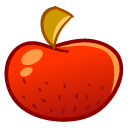
When parents think carefully about what habits they're unwittingly giving their children by what they themselves eat, they can start eating more healthily themselves and the whole family's eating habits get better so they all benefit.
And if everything on the child's plate is healthy, then even if they don't eat everything, they'll still be eating something healthy.
Eating Healthy Puddings Instead of Sugar-Filled Ones, and Keeping the Children's Portions of Food Quite Small
Puddings could often be mixtures of chopped-up fruit rather than unhealthy things.
That doesn't mean anyone should try to put children off eating unhealthy but enjoyable meals or snacks. They shouldn't be considered bad foods, just treats rather than everyday food. Some people who think of delicious but unhealthy food as forbidden food start craving it because they don't like not being allowed to have it and wish they could have it, and then they end up bingeing on it, which is even more unhealthy than eating the amount they would have eaten before. So it can be best to think of unhealthy food as something to eat quite a bit less often, rather than food to eliminate altogether.
It's best to give children fairly small portions of things on fairly small plates. Giving them big portions will put them at risk from becoming overweight, and giving them big portions of things they're not keen on and then insisting they finish them will put them off the food even more.
Explaining What's Good About Healthy Food
Also, it can be good to explain to them why each healthy food is good for them; perhaps try to sound enthusiastic about it. But even if you just sound matter-of-fact, the children will probably enjoy learning the information and get more enthusiastic themselves.
Making Mealtimes Companionable or Fun
Eating meals around a table together without the television on, rather than eating separately while everyone has their attention distracted by something else, can be an opportunity for a busy family to come together and enjoy each other's company and so become closer.
If there's not much to talk about, mealtimes can be made fun if games are played around the meal table, that don't need any items cluttering up the table because they're just brain games. For instance, there's a word game where one person says a word, and then the person next to them has to say a word beginning with the letter the first person's word ended with, and it goes round the table like that. There are probably lots of ideas for simple games like that on the Internet.
Information About This Article and Website
Sources of Information Used in Creating This Article
 Some of the vegetables and fruit with the highest amounts of vitamin C are citrus fruits, strawberries, blackcurrants and peppers. But good amounts can be found in lots of other fruits and vegetables. A large peach per day would contain all the vitamin C most people need. Smokers need twice as much vitamin C as everyone else though. Potatos don't contain a particularly high amount, but certainly a useful one.
Some of the vegetables and fruit with the highest amounts of vitamin C are citrus fruits, strawberries, blackcurrants and peppers. But good amounts can be found in lots of other fruits and vegetables. A large peach per day would contain all the vitamin C most people need. Smokers need twice as much vitamin C as everyone else though. Potatos don't contain a particularly high amount, but certainly a useful one.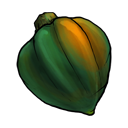 In general, the more intense the colour of a fruit or vegetable, the more health-promoting carotenoid compounds like beta carotene it's likely to contain. Fruit that contains a lot includes cantaloupe melon and mango. Green leafy vegetables like spinach do as well.
In general, the more intense the colour of a fruit or vegetable, the more health-promoting carotenoid compounds like beta carotene it's likely to contain. Fruit that contains a lot includes cantaloupe melon and mango. Green leafy vegetables like spinach do as well.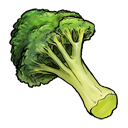
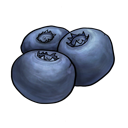

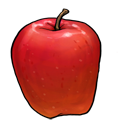 Fibre's made up of parts of plants humans can't digest on their own. Since it's not digested, insoluble fibre has a lot of bulk and makes the stomach feel full more quickly so it's passed along the gut more quickly. Also it absorbs water, which makes any faeces it becomes a part of softer, so it's easier to pass out of the system. Those are the reasons it helps with a lot of constipation. Fibre doesn't prevent all constipation, but can often help.
Fibre's made up of parts of plants humans can't digest on their own. Since it's not digested, insoluble fibre has a lot of bulk and makes the stomach feel full more quickly so it's passed along the gut more quickly. Also it absorbs water, which makes any faeces it becomes a part of softer, so it's easier to pass out of the system. Those are the reasons it helps with a lot of constipation. Fibre doesn't prevent all constipation, but can often help.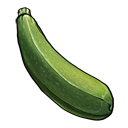
 The reason free radicals come into being is that cells go through a process called oxidation, which is where oxygen molecules flow around the system helping the body give cells energy, but then gradually it causes them to burn out and die, which is OK because the body generates fresh new cells instead; it's part of a repair mechanism that's useful because it means that cells that have suffered a bit of wear and tear are got rid of and replaced. But the process of doing that isn't perfectly efficient, and a small percentage of cells are left damaged; they're missing a molecule and it's as if they go on the hunt for one to make up for it, so they can steal one from a healthy cell, turning each one into damaged cells that also go on the hunt for new molecules and steal them from other cells, which then do the same with other cells; it becomes a damaging chain reaction that can cause problems over time. Those damaged cells are called free radicals. The body does have some defences against them, but sometimes there can get to be too many for it to cope well. Antioxidants can stop the damaging chain reaction because they're like donors; the damaged cells take the molecules they need from them instead of from other cells.
The reason free radicals come into being is that cells go through a process called oxidation, which is where oxygen molecules flow around the system helping the body give cells energy, but then gradually it causes them to burn out and die, which is OK because the body generates fresh new cells instead; it's part of a repair mechanism that's useful because it means that cells that have suffered a bit of wear and tear are got rid of and replaced. But the process of doing that isn't perfectly efficient, and a small percentage of cells are left damaged; they're missing a molecule and it's as if they go on the hunt for one to make up for it, so they can steal one from a healthy cell, turning each one into damaged cells that also go on the hunt for new molecules and steal them from other cells, which then do the same with other cells; it becomes a damaging chain reaction that can cause problems over time. Those damaged cells are called free radicals. The body does have some defences against them, but sometimes there can get to be too many for it to cope well. Antioxidants can stop the damaging chain reaction because they're like donors; the damaged cells take the molecules they need from them instead of from other cells. It's especially good to eat foods containing antioxidants because a variety of things cause a bit of wear and tear on cells and make them more vulnerable to being turned into free radicals. Pollution, smoking, sunlight, the ageing process, and exercise can do that. When people exercise, they need to use more energy, and they take in more oxygen which helps cells generate more. But then the oxygen puts them through the wearing down process, so a small percentage get turned into free radicals. So exercise actually increases the amount of free radicals the body produces. That doesn't mean exercise isn't healthy after all; it is; in fact it's essential to health. But if exercising, or if being exposed to things like pollution or smoking that also make cells vulnerable to wear and tear, it's even more important to eat good amounts of antioxidants to stop the free radicals doing damage.
It's especially good to eat foods containing antioxidants because a variety of things cause a bit of wear and tear on cells and make them more vulnerable to being turned into free radicals. Pollution, smoking, sunlight, the ageing process, and exercise can do that. When people exercise, they need to use more energy, and they take in more oxygen which helps cells generate more. But then the oxygen puts them through the wearing down process, so a small percentage get turned into free radicals. So exercise actually increases the amount of free radicals the body produces. That doesn't mean exercise isn't healthy after all; it is; in fact it's essential to health. But if exercising, or if being exposed to things like pollution or smoking that also make cells vulnerable to wear and tear, it's even more important to eat good amounts of antioxidants to stop the free radicals doing damage.

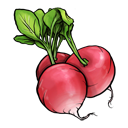






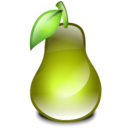

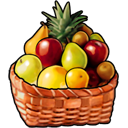



 Iron also helps the body convert beta carotene into vitamin A, after people have taken it in by eating things like carrots, red peppers, cantaloupe melons and apricots.
Iron also helps the body convert beta carotene into vitamin A, after people have taken it in by eating things like carrots, red peppers, cantaloupe melons and apricots.